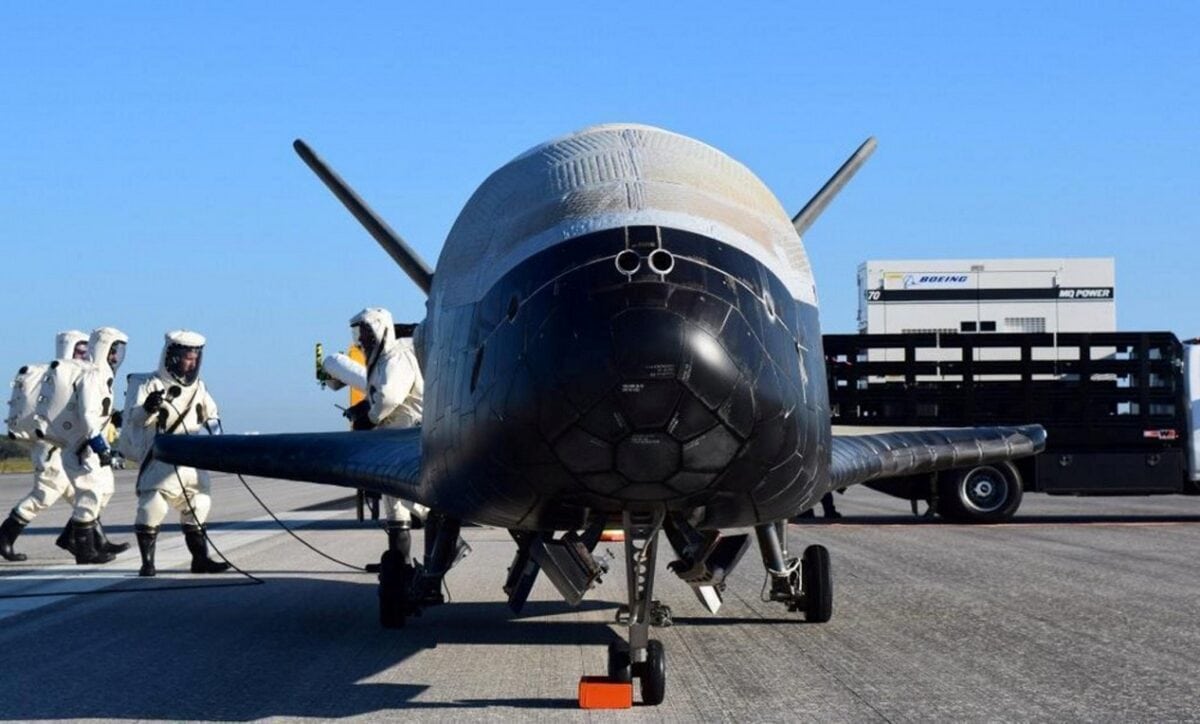The X-37B Orbital Test Vehicle, or OTV, is an experimental test space vehicle that is planned as a reliable, reusable, unmanned space test platform for the U.S. Space Force. Since its first flight in 2010, the X-37B has served NASA, the US Air Force, and now the US Space Force.
It is one of the most intriguing aircraft in the US inventory. Although most analysts believe it is a space spy vehicle, no one really knows what its mission is.
The Space Force’s Delta 9, which is part of the 3rd Space Experimentation Squadron, operates the OTV.
In early July, one of the OTVs surpassed 780 days in space; the first of the OTV space flights had been 224 days. Each successive flight has lasted more than a year. It has now safely landed on Earth.
The Space Force won’t acknowledge how many X-37Bs it has, but it is believed that they currently only have two.
Russia claims that the OTV is a bomber designed to deliver nuclear weapons from space, but the cargo bay is tiny. While outwardly appearing as the space shuttle, its size is akin to the shuttle’s tadpole, at only one-quarter of the size.
General Characteristics of the X-37B:
The X-37B was awarded the Collier Trophy in 2020, a very prominent award in aviation, for pushing “the boundaries of flight and space exploration,” according to the U.S. Air Force, which then ran the program.
“Sophisticated and uncrewed, the X-37B advances reusable spaceplane technologies and operates experiments in space that are returned for further examination on earth,” Secretary of the Air Force Barbara Barrett said in a released statement.
There have been six test flights, with the first three landing at Vandenberg AFB in California.
Primary Mission: Experimental space test vehicle
Prime Contractor: Boeing
Height: 9 feet, 6 inches (2.9 meters)
Length: 29 feet, 3 inches (8.9 meters)
Wingspan: 14 feet, 11 inches (4.5 meters)
Launch Weight: 11,000 pounds (4,990 kilograms)
Power: Gallium Arsenide Solar Cells with lithium-Ion batteries
Launch Vehicles: United Launch Alliance Atlas V (501) and SpaceX Falcon 9
Boeing developed high-temperature wing leading-edge tiles and toughened uni-piece fibrous refractory oxidation-resistant ceramic (TUFROC) tiles.
Like the space shuttle, the X-37B takes off vertically from a space launch pad and is propelled by either the Atlas V or the SpaceX Falcon 9 rockets.
Once in orbit, it has internal power that can easily carry on for more than 1-2 years. It can also maneuver on its own, and it eventually lands on a runway back on Earth, just like the shuttle or a conventional aircraft.
According to Boeing, the X-37B operates at a low-earth orbit with an altitude of between 150 and 500 miles (240 to 805 kilometers) above Earth.
Russia and China Claim The X-37B Is a Bomber:
While technically possible to place small weapons on board the OTV due to its small cargo bay, the bigger question is, why would you want to? However, both Russia and China insist that the OTV is a bomber.
Yan Novikov, the director-general of Russian defense technology company Almaz-Antey, said it could carry nuclear warheads last year. “The official story is that these platforms were developed for scientific purposes and, well, surveillance. But we understand that having these capacities and possibilities, the smaller spacecraft can carry up to three nuclear warheads,” Novikov said.
Novikov added the claim the US is planning on expanding the OTV fleet to eight by 2025. He also claimed that the US has two different types of OTVs, but the X-37B right now is the only OTV in America’s inventory.
But in an excellent piece, Popular Mechanics’ Kyle Mizokami put those allegations to rest.
First of all, the cargo bay of the small X-37B is about the size of a standard pickup truck bed (6.9 feet long and 3.9 feet wide).
While the subsonic Tomahawk cruise missile could conceivably carry a W-80 thermonuclear warhead, both the missile and the warhead would have to be highly modified to re-enter the earth’s atmosphere, increasing the size to where the “XB-37B” could only carry three.
But flying in a low-earth orbit, the X-37B will be visible to astronomers or air defense operators, so the element of surprise is lost. It is unfeasible. And even if it could avoid detection, a sneak attack by an X-37B would hardly make a dent in Russian ballistic missile defenses.
And the Russians have air defense missiles that can shoot down air/space vehicles in a low-earth orbit.

The U.S. Airforce’s X-37B Orbital Test Vehicle mission 4 after landing at NASA’s Kennedy Space Center Shuttle Landing Facility in Cape Canaveral, Florida, U.S., May 7, 2017. U.S. Air Force/Handout.
While our adversaries can believe what they want, the X-37B is precisely what the US Space Force says it is, a reusable spacecraft that can conduct experiments which can be returned to, and examined, on Earth.”
It is too small and not nearly maneuverable enough to be used as a space weapon. While not as exciting as a mini-US “death star,” it can and will allow the US to test new satellite technology and sensors in space.
Bonus: Meet the Space Shuttle (The Idea for the X-37B?)

Shuttle Discovery at National Air and Space Museum on October 1, 2022. Image Credit: 19FortyFive.com

NASA’s Space Shuttle Discovery. Image Taken by 19FortyFive.com on October 1, 2022.

NASA Space Shuttle Discovery. Image Credit: 19FortyFive.com taken on October 1, 2022.
Expert Biography: Steve Balestrieri is a 1945 National Security Columnist. A proven military analyst, he served as a US Army Special Forces NCO and Warrant Officer in the 7th Special Forces Group. In addition to writing for 19fortyfive.com and other military news organizations, he has covered the NFL for PatsFans.com for over 11 years. His work was regularly featured in the Millbury-Sutton Chronicle and Grafton News newspapers in Massachusetts.

